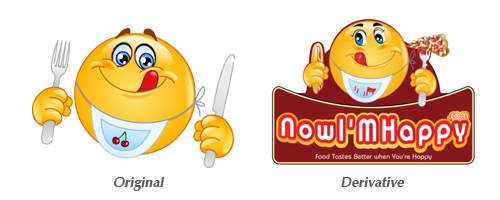The Difference Between Overused And Derivative Logos

Image Source: danemark/iStock/gettyimages
Given the very nature of my job, I go through dozens of logo designs every day, the things I see too much of are derivative and overused logos. Upon further investigation and discussions with other designers, I’ve learned that generally people confuse the two terms. Many designers and project holders think the two terms are one in the same. They are not.
Let’s shed some light on both terms to distinguish one from the other. This post will give you a good understanding of each term as well as where and when they should be used.
Overused Logos – Common and Clichéd
Overused logos are exactly that, overused. These are clichéd design concepts that have been used so often that they portray a dull feel when used. There are symbols for every industry that have been overused by designers through ages. They’ve been used so much that they cannot help a business stand out in today’s market.

Image Source: StefanIlic/iStock.com
When people look at overused symbols in logos they instantly make a connection with something they’ve already seen. For example, the symbols of a scale in a law firm logo or rooftops in real estate logos are just a few examples of overused symbols.
Derivative Logos – Copied and Unoriginal
Derivative logos are based on stock images, clipart or existing logos created by someone else. They are essentially ‘derived’ from an existing design. The designer who creates a derivative logo is basically copying someone else’s design and making a few changes to call it their own.

Image Source: Yayayoyo/shutterstock.com
This is a very common and unproductive practice among new designers. They tend to look at different types of designs to get inspiration and ideas for their projects. Sometimes they see a design they like and take it a step further by making slight modification to it to make it appear unique.
While this approach works and some designers are able to get away with it, it is obvious that it is not a genuine or creative approach. A derivative logo design can lead to trademark infringement and copyright issues for the designer and their client. This will eventually lead to a designer’s bad rep in the long run and blacklist him in the market. With a bad track record, it will be hard for him/her to find design jobs in the future.I hope that now, the difference between overused logos and derivative logos is much clearer. Overused designs are common but they don’t allow a client to stand out in their market. Derivative designs are simply copied work, which should be avoided. If there is one thing that can be said about both of them, it would be that neither approach should be practiced by graphic designers.
Your logo design and branding should be original. A truly unique brand design is an elegant mix of elegance, innovation, uniqueness and ingenuity. All of us at ZillionDesigns.com would like to stress this and encourage designers to use their imagination. Remember, being unique is worth its weight in gold in this business.


